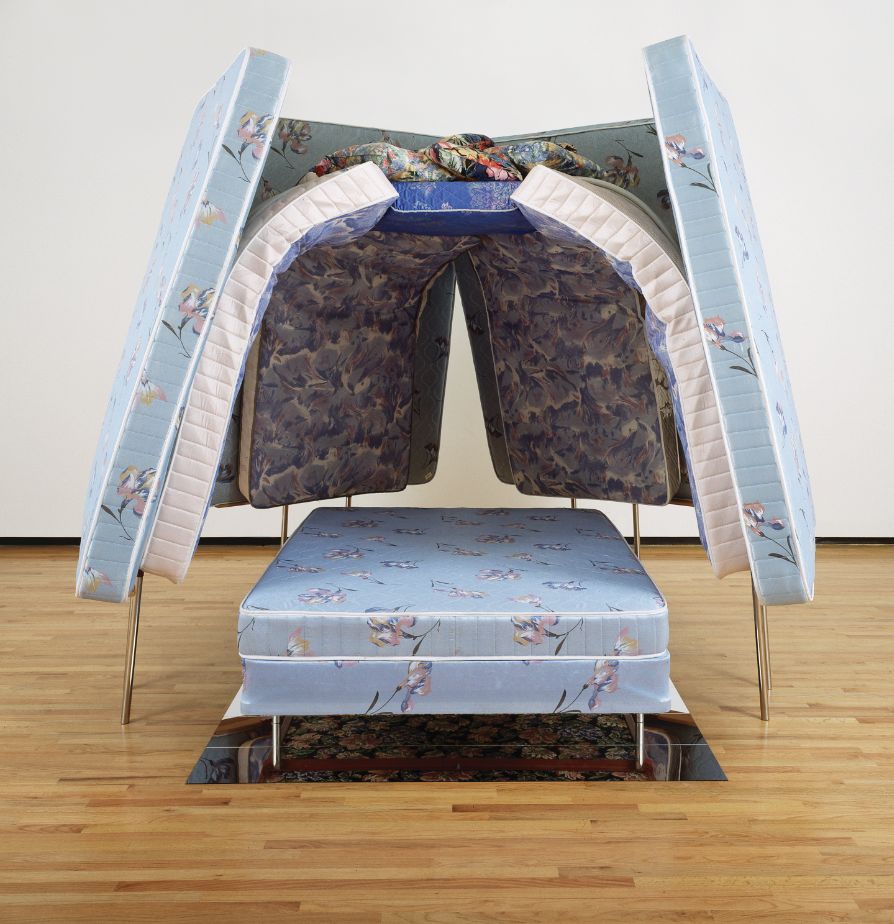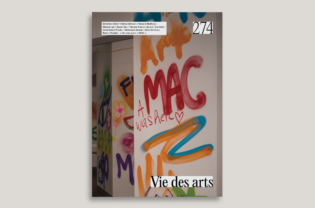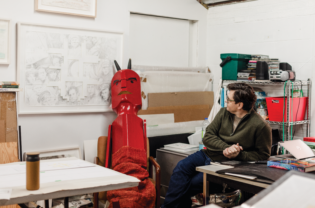Uncanny Kingdom
The Enigmatic Art of Mowry Baden

Ever since the French invented a mechanical device called the camera in about 1840, visual artists have been liberated from the tyranny of mere pictorial representation. Likewise, sculptors have been offered the opportunity to leave behind the pedestal in favour of incorporating everyday life into their pieces. With his consistent passion and creative commitment, Mowry Baden has taken that liberty of expression to heart like nobody else. Originally from Los Angeles and a resident of Victoria, B.C., since 1971, over the years Baden has consistently produced a steady stream of emotionally compelling and intellectually rigorous works.
Having decided that “painting seemed all used up” by the end of the 1960s, Baden’s self-stated strategy was as simple as it was ambitious: provoking a perceptual crisis in the viewer through the manifestation of constructed environments, or “envelope spaces.” These spaces invite us to experience kinesthesia, the sensory awareness of position and movement most often contained in task-oriented and body-centred physical settings. His earliest example of this serious form of play is the 1970 floor-mounted piece Untitled (Seatbelt), which is just what it says: an excessively long looped seatbelt bolted to the floor in three places and permitting interactive but non-utilitarian use.
The result is a kind of physical calligraphy the poetry of which is hard to describe, with an ever-shifting graphic placement, depending on each visitor’s chance rearrangement, that results in a palpable haptic haiku written on the museum floor. Basically, the entire architectural ground has become Baden’s conceptual pedestal. The rest of the Vancouver Art Gallery’s career-length retrospective of the Governor General’s Award–winning mixed-media artist is just as cheeky and engaging. It’s a living demonstration of how the basic definition of what an art object is and what it’s supposed to do underwent a drastic upheaval in the post-photography era, culminating in the ascent and supremacy of abstraction in all forms.

Steel, aluminum, fabric, rubber
Collection of the Artist
Photo: Mark Alldritt
The exhibition of fifteen sculptural pieces, as well as journal drawings and an archive of public art projects, was a masterful crash course in the efficacy of French historian Jules Michelet’s nearly mystical observation that “each epoch dreams the one to follow and creates it in dreams.”1 It showed just how far a liberated artist can go once technology sets him or her free. In Baden’s case, the show also celebrated his legitimate allegiance to major international art movements such as Fluxus, Arte Povera, and Assemblage Art through the elevation of quotidian objects far above their usual status as thing. A perfectly curated cross-section of Baden’s often whimsical and sardonic sculptural assemblages, the eponymous exhibition Mowry Baden was an ideal–but not idealistic–show, quite suited to our times. Basically, the trajectory from the strictures of vertiginous modernity to the open- ended ambiguities of the postmodern realm are charted almost cartographically in the creative arc of Baden’s work from the mid-1960s to the present.
Many of Baden’s oneiric sculptural objects, often splendidly tongue-in-cheek reconfigurations of engineering poetry and mechanical theatre, relate to, or involve, collisions of everyday things with a surreal dream narrative usually perceptible to a sense of touch. Pieces such as the superbly chilling Cheap Sleeps Columbine (1994), with its mandala of mattresses, box springs, and mirrors, and one of my favourites from the survey show, Marsupial (2013), with its spooky wheelbarrow and cage-like enclosure for a human bearer, are definitely canny testaments to the uncanny kingdom that we all occupy in this disturbing century.
Paul Cézanne, referring to his own late visionary evocations of nature, once remarked, “The landscape thinks itself in me, I am its consciousness.” And, strolling like a psychic flâneur through the calm splendour of Baden’s post-industrial mystery-objects, I sensed a potential to characterize them in a way that echoed, but far outdid, Cézanne. “The machine thinks itself in us, we are its consciousness.”2 If art history is a relay race, with individual artists passing the baton from one to the next, then Baden has grabbed Cézanne’s baton and run right off the track with it.
Baden’s works can be seen both as a source of macabre spectacle and educational entertainment, via the image of a site that copies life, and as a territory that negotiates the development of unsettling new genres of representation.
Baden’s charming and confounding works, especially a trio of rubber and stainless- steel sculptures titled Braille (2016), Punched and Grilled (2015), and Tachycardia (2016), quite literally embody and personify the character of what philosopher Walter Benjamin called “the work of art in the age of mechanical reproduction.” These works also bring to life the vivid personality of a dynamic that the press agent for the future, historian and architecture critic Siegfried Giedion, so accurately defined in his 1948 book Mechanization Takes Command as a “contribution to our anonymous history.” These are engineered dream objects come to life: emblems of an industrial domain suddenly rendered mute of customary meaning. But Baden is not all just about puns or bemusement. His art is also about suspended satisfaction, anxious anticipation, delayed gratification, and, most especially, unfulfilled expectations. He often addresses important aesthetic issues such the physical embodiment of spirit through sculpture and its discomforts through thought. Rubber Thistle (2013), with three interlocked warehouse pushcarts that can be moved in circles but not utilized practically, is such a piece.

Baden explores polarities of life and death, as well as the dualities of waking and dreaming, through the strange affinity that inherently exists between his uncanny engineering effigies and his clever disruptions of aesthetic representation embedded in certain radical art traditions. Indeed, his works can be seen both as a source of macabre spectacle and educational entertainment, via the image of a site that copies life, and as a territory that negotiates the development of unsettling new genres of representation.
As Baden so ably illustrates, the sculptural image is deeply wedded to the living human body in motion and at rest. It is also a passage haunted by stillness and absence, as exemplified by the obscure objects of desire so effectively examined in this retrospective at the Vancouver Art Gallery. Economy of means, complexity of meaning: few artists employ dislocation as a strategic tool to elicit both empathy and jamais vu quite as powerfully as Mowry Baden.
Mowry Baden
Curator: Grant Arnold
Vancouver Art Gallery
March 9–June 9, 2019
(1) Jules Michelet, “Chaque époque rêve la suivante, la crée en rêvant,” in Avenir, Avenir !, April 4, 1839 (our translation).
(2) Maurice Merleau-Ponty, “Le doute de Cézanne” in Sens et non-sens (Paris: Gallimard, 1945) (our translation).





